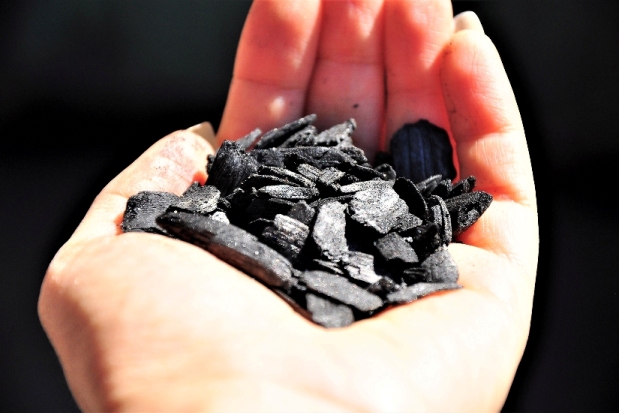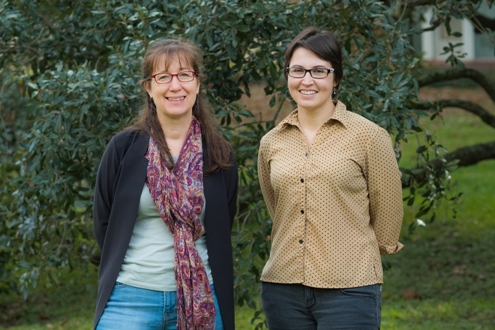Rice U. wildfire study: Soil charcoal became more concentrated over time

HOUSTON — When a forest fire decimated more than 3,000 acres of Rice University-owned timberland in 2011, biogeochemist Carrie Masiello saw a silver lining in the blackened trees.
Masiello is an expert on how carbon behaves in soil, and she noticed a vexing problem in both the scientific literature and findings from her lab: Charcoal is abundant in soil, particularly in fertile regions like Europe’s breadbasket and America’s Corn Belt, but while it’s clear that most soil charcoal came from wildfires, it wasn’t at all clear why it stayed there so long or how it got into the soil after a fire.
In a newly published study in the Journal of Geophysical Research, Masiello and colleagues, including current and former graduate students Lacey Pyle and Kate Magee, analyzed soil samples collected after the fire and found that charcoal behaved very differently from other forms of soil carbon as the land rebounded from the fire.

“We looked at all forms of carbon in the soil, both immediately after the fire and over a two-year period, and we found that it became more evenly distributed over time, which is a sign that the land was returning to its baseline state,” Masiello said. “Charcoal behaves exactly the opposite. It’s distribution became more patchy over time, and we think that’s because it’s buoyant and gets moved by water and concentrated in low places on the landscape.”
Masiello said it was not a surprise that charcoal was buoyant. In fact, the research team had specifically chosen flat research sites because previous studies had shown that soil carbon tended to migrate downhill over time. The surprise was the extent to which charcoal from the fire had become concentrated, even in the absence of notable topographic relief.
“It was redistributed on the landscape pretty effectively,” said Pyle, the lead author of the study. “Rather than staying where it was initially deposited, it had a tendency to move horizontally across the landscape. The total contents of charcoal in our study sites didn’t change that drastically over the time period, but where we were finding it changed quite a bit.”
Charcoal’s benefits as a soil amendment are fourfold: It reduces atmospheric carbon dioxide and pollution, improves crop productivity, allows agriculture in areas with marginal soils and makes soil more resilient to both drought and flooding.
In 2008, Masiello and study co-author William Hockaday, then at Rice and presently at Baylor University, began seriously studying soil charcoal after winning a $10,000 prize in the city of Houston’s “Recycle Ike” contest in the wake of Hurricane Ike. The storm left 5.6 million cubic yards of fallen trees, broken branches and dead greenery in Houston, and Rice’s team took first place in the contest with their plan to convert the wood into biomass charcoal, or “biochar,” for use as a CO2-trapping soil amendment.
In subsequent studies, Masiello’s lab has explored biochar’s production, microbial impacts, hydrological characteristics and pollution-reducing effects.
“More carbon in soil is good, and as we think about ways to stabilize and increase soil carbon inventory, charcoal is an obvious option,” Masiello said.
To get the most benefit from biochar, Masiello said, scientists and land managers need to better understand the fate and transport of soil charcoal, and studying naturally occurring soil charcoal is a great way to gain that understanding.
“We know that lots of carbon in soil is old,” she said, adding that the ages of soil charcoal measured with radiocarbon dating “suggest that it’s hard to decompose. But when we bring it into the lab, it turns out it’s not that hard to decompose.”
The findings from the wildfire study offer a new clue as to how naturally occurring charcoal can remain stable for long periods of time, Masiello said.
“It’s possible that the mobility of charcoal on the landscape and it’s tendency to become concentrated in low-lying spots could make it more likely the charcoal from wildfires becomes buried and incorporated deep in soils and that these deposits act as a kind of charcoal reservoir that releases charcoal into the soil over long time spans.”
The research was funded by Rice University and Chevron. Additional co-authors include postdoctoral research associate Morgan Gallagher.







